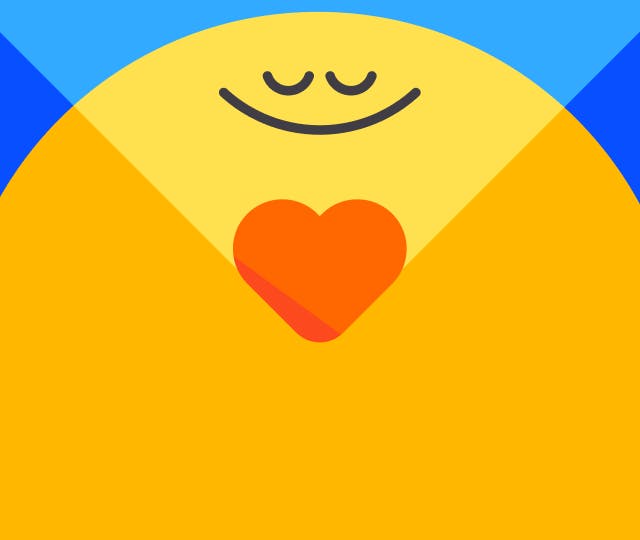How to deal with the negative effects of social media
By Your Headspace Mindfulness & Meditation Experts
Aug 30, 2021
Socializing is a vital part of our lives — it helps us feel more connected and create community. When we’re apart, using social media makes it easier to stay in touch and maintain those connections. It has other benefits, too, such as allowing us to practice social skills in a low-stakes environment, find new friends through shared interests, and preserve memories. But we all know that social media isn’t without its downsides.
Many of us can relate to losing track of time or feeling unmotivated after a mindless scroll. And it’s easy to feel lonely when we’re only communicating virtually, or worse, we might feel a sense of low self-worth in comparison to the pictures of perfection we see online — whether they represent reality or not.
If you’re hoping to establish a healthier relationship with social media, understanding the impact it has on conditions like loneliness or anxiety is key. With this knowledge, we can learn how to take a mindful approach to social media use, gaining greater control over our digital behaviors and feeling less controlled by them in our real lives.
Need a break from scrolling? Try this free 1-minute meditation

Watch Mini-Meditation: Breathe
1 min

Key takeaways
-
Social media can take a toll on our thoughts and emotions
-
With mindfulness, we can learn to focus on the good parts of social media and avoid the common pitfalls
-
Try 8 meditations to use social media more mindfully


Be kind to your mind
- Access the full library of 500+ meditations on everything from stress, to resilience, to compassion
- Put your mind to bed with sleep sounds, music, and wind-down exercises
- Make mindfulness a part of your daily routine with tension-releasing workouts, relaxing yoga, Focus music playlists, and more


Stay in the loop
Be the first to get updates on our latest content, special offers, and new features.
By signing up, you’re agreeing to receive marketing emails from Headspace. You can unsubscribe at any time. For more details, check out our Privacy Policy.
- © 2025 Headspace Inc.
- Terms & conditions
- Privacy policy
- Consumer Health Data
- Your privacy choices
- CA Privacy Notice








Social media and mental health
From push notifications to targeted advertisements, the manipulative practices of social media are real. Put plainly, these platforms are designed to lure us in and keep us there (the more time we’re plugged in, the better their metrics). Unfortunately for us, the negative impact of social media only gets worse the more time we spend on it. And once we’re hooked, the platforms tend to be the only side that wins. The negative effects of social media on mental health are real, too:
If you find yourself feeling anxious or depressed after being on social media, you’re not alone. Research has shown that social media and anxiety go hand and hand, with increased screen time exacerbating feelings of anxiousness, and sometimes even creating them in the first place.
Otherwise known as FOMO, these feelings of anxiety may come from not being invited to or not participating in enjoyable experiences with others. FOMO can lead to a negative thought cycle unique to social media: Worry sets in that events are happening without us, followed by the urge to keep scanning the platforms for proof, and finally, feeling a sinking validation of our worry when we see proof of those off-our-radar gatherings in posts online.
When airbrushed photos fill our feeds, it can be easy for negative feelings surrounding social media and body image to creep in. The thin-ideal presented in photos online creates an unattainable social media body image that can have a real effect on our self-esteem. When we’re hooked on regular scrolling and we see more and more picture-perfect images, sometimes we end up feeling worse about ourselves.
Constant scrolling can also chip away at sleep. One British study found that teenagers who used social media for more than 3 hours per day were more likely to go to sleep late and wake up during the night. That’s more bad news for those of us who spend a lot of time on social media and suffer from anxiety: We end up feeling anxious about what we’re seeing on the apps, and even more anxious from the lack of sleep caused by our time spent scrolling.
One survey found that 30% of teens in the U.S. had experienced some form of cyber aggression in the last month, from unkind statements to rumors and even threats. Cyberbullying can be difficult to monitor, and it can have real, dangerous effects on mental health for people of all ages who experience it.
With these negative effects top of mind, it’s tempting to want to remove social media from our lives completely. And while that’s certainly an option if we find that we’re better off without it (and can stay off it), it’s still possible to keep our daily scroll and curb the bad feelings.